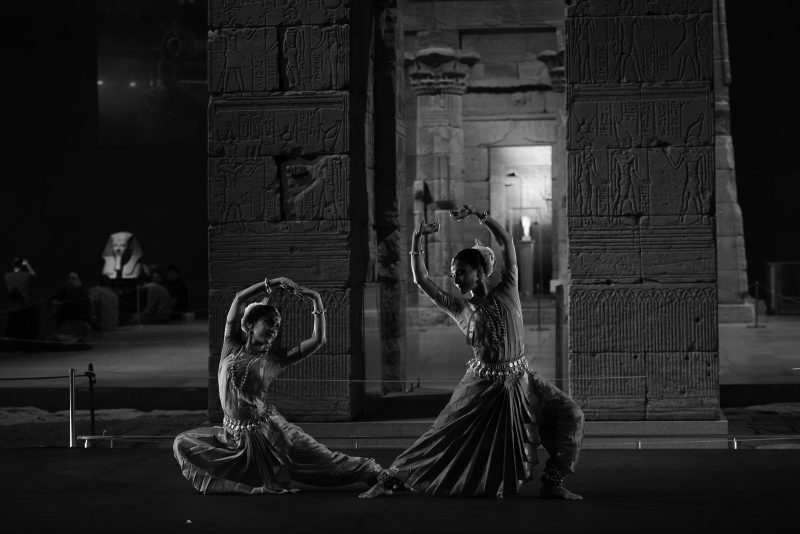It is ten minutes to showtime. Surupa Sen and Bijayini Satpathy—the principal dancers of the classical Indian ensemble Nrityagram—are stretching in their open-air home studio near Bangalore, India. The sun sank over an hour ago, but the temperature has yet to follow. It is brain-meltingly hot. As the guru, Sen needn’t suffer. After a final warm-up of leaping into the air and smacking her heels against her backside ten times in a row, she calls over her apprentices—three girls in their late teens—and expresses her displeasure. Giggling, one fans Sen with the hem of her kurta. When Sen protests the ineffectiveness of this method, the others dart away and return with a few magazines. Nodding her approval, Sen folds herself in half, nose to knees, and enjoys the breeze’s reprieve. Then she swats a mosquito. An apprentice runs for a bottle of repellent, squeezes some into her palm, and passes it to another apprentice. Together, they massage the lotion into their guru’s arms while the third continues to fan her.
Satpathy, meanwhile, is clearing the dance floor of errant occupants, namely beetles. Although there is a broom nearby—not to mention eager apprentices—she elects instead to pick one up with her bare hands and carry it over to the paneless windows cut into the stone walls. Gently, she releases it.
Shrieks of laughter indicate their audience is approaching. Sen and Satpathy typically dance for crowds of hundreds or even thousands at the world’s top venues and festivals. The New Yorker has deemed them “probably the Indian dance company most beloved by American audiences right now (maybe ever),” while the New York Times concluded a 2015 review with “The only proper response to dancers this amazing is worship.” But tonight is a humble affair, just a couple dozen schoolchildren who are spending the week at their famed village. Instead of wearing their usual brocade silks and jewels and crowns of jasmine bulbs, Sen and Satpathy have donned cotton saris over cholis and leggings. Rather than to live musical accompaniment, they will dance to a CD. In place of distinguished critics, they have me.
The children burst into the studio with laughs and shouts—until Sen casts her dark eyes on them. They become silent almost immediately. Once they have settled onto the mats lining the floor, she reveals the subject of tonight’s performance: Lord Shiva. What, she asks, do they know of him? A dozen hands shoot skyward. Shiva is the god who makes the Ganges River flow from his hair, they say; the one who wears five serpents and a garland of skulls; who has three eyes and four arms; who once drank a pot of...
You have reached your article limit
Sign up for a digital subscription and continue reading all new issues, plus our entire archives, for just $1.50/month.
Already a subscriber? Sign in





